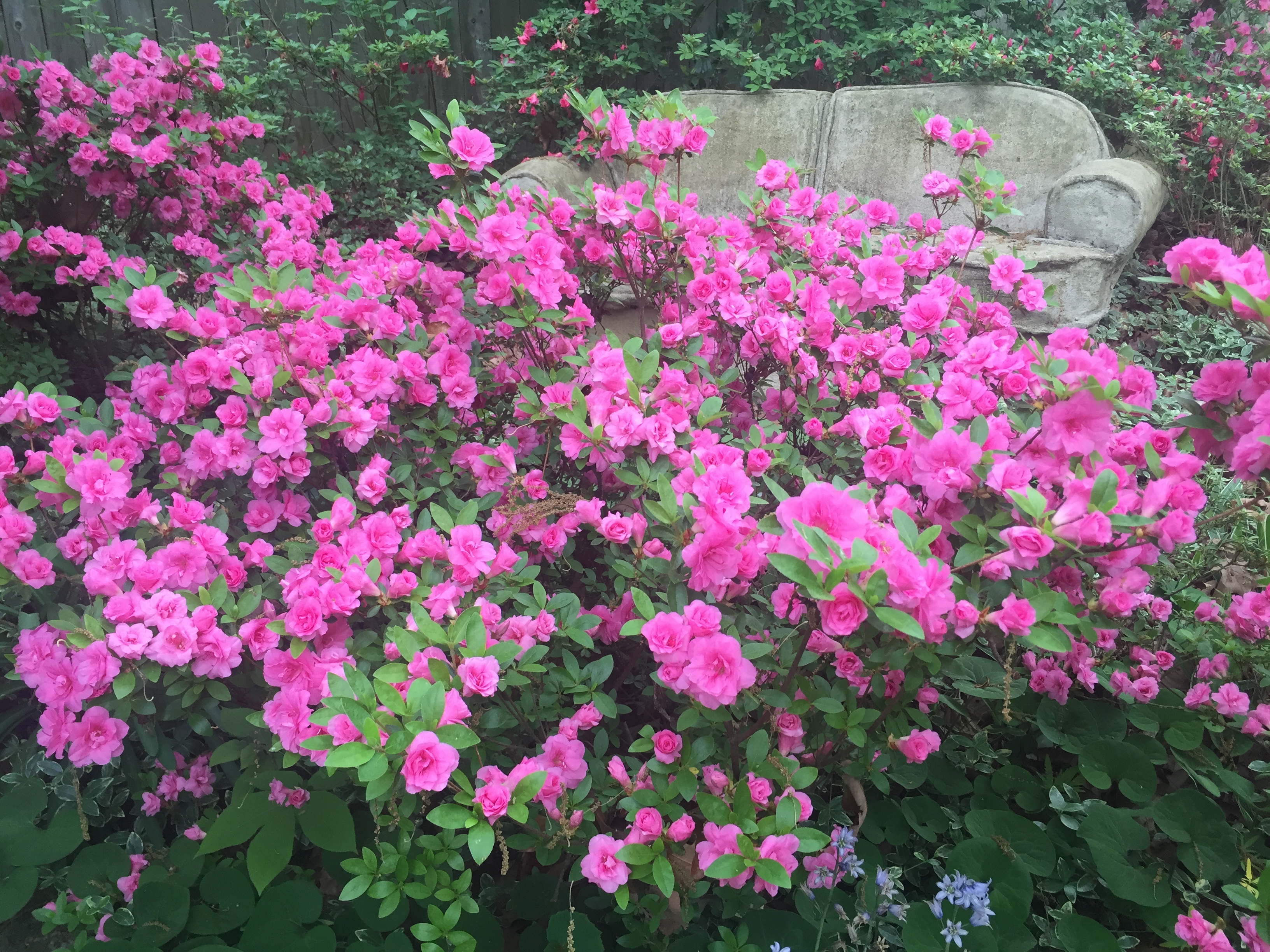Resource Library
Plant of the Week: Rhododendron “Rosebud”; Gable hybrid Azalea “Rosebud”
My six week long azalea season is winding down for another year. I’m entering what I consider “late season” for me, which means plants that bloom in the last week of April and the first 10 days of May. “Rosebud” azalea, a plant I consider early-late season while others describe it as late-midseason, is approaching full bloom and deserves closer consideration.
Rosebud azalea is a relatively slow growing evergreen azalea that reaches 3-4 feet tall and wide in 25 years. Over the 20-plus years I have grown Rosebud, it has consistently bloomed during the last week of April here in my north Arkansas garden. My plants, growing in light shade, have ascending branches from a broad base, but some of this shape may be an artifact from the 2007 Easter freeze that forced me to prune them back after the hard, late-season freeze popped the bark on the plants just as they were coming into bloom. The foliage is typical of that of an azalea but, unlike some, seems to have little in the way of fall color.
The clear pink Rosebud flower is a fully double azalea. Just before the buds fully open, it does resemble a rose that is about to open. Azalea people refer to the flowers as “hose in hose,” meaning that one whorl of blooms nestles directly inside another whorl of flowers, much like one Styrofoam coffee cup nests inside another. In this case, the outer whorl of the flower, the sepals, have been replaced by petals, followed by the five true petals. In addition, several of the anthers (pollen producing parts of the flower) have also become petaloid so usually there are a dozen or so petals in each flower.
Rosebud azalea was developed by the legendary azalea breeder Joseph Gable (1886-1972), whose nursery was in Stewartstown, Penn., about 50 miles north of Baltimore near the Maryland line. Gable started his nursery in the late 1920s and, like most really successful people, began networking with others around the region and in Europe who knew more about the garden world than he. During the depression years Rhododendrons became his special interest while he earned a reputation for having a better than average selection of new, interesting plants.
In the late 1930’s he became interested in evergreen azaleas and started his breeding program using the Kaempfer azalea from Japan with the large, hardy semievergreen Korean azalea. Nearly all of these first hybrid seedlings had lavender or mauve flowers and possessed the degree of winter hardiness that became the hallmark of his 85 named crosses. He then crossed these first hybrids with several of the more tender but colorful Indica azalea to produce his first named azaleas, “Louise Gable” – a deep pink semidouble — and “Caroline Gable,” a late season red with purple blotch. These first-generation introductions were the parents he used to create “Rosebud” and the similar “Lorna.” Rosebud first appeared in his catalog in 1948, Lorna two years earlier.
Over the years several plants have been sold under the very marketable and memorable name “Rosebud.” I’m not sure my plants are the true Rosebud (they could be Lorna), but, as they say, a rose by any other name would smell as sweet. Not that Rosebud azaleas have any fragrance. They don’t.
But being double flowered they seem to persist a few days longer in bloom than many selections. The only unfortunate trait of this clone I don’t like is that the petals are not “self-cleaning,” which means the withered blossoms do not detach and fall after fading. They go through a couple weeks of rattiness until they are either cleaned away or new growth obscures the mass of withered flowers. Gable’s hybrids remain an important source of winter hardiness in azaleas that have been introduced since his time.
Rosebud is a typical azalea that requires well drained acidic soil and bright shade to produce the best bloom. Full sun can be tolerated as long is there is some shade provided during the hottest part of the day. Azalea lacebug can be a problem if the plant is getting too much sun or if there is an especially bad outbreak of the pest, but it seems no more susceptible than any other azalea. Rosebud azalea is hardy from zone 6 through 8.
